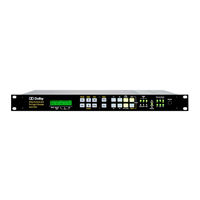Dolby Laboratories DP570 Audio Tool Manuals
Manuals and User Guides for Dolby Laboratories DP570 Audio Tool. We have 4 Dolby Laboratories DP570 Audio Tool manuals available for free PDF download: User Manual, Installation Manuallines
Dolby Laboratories DP570 User Manual (127 pages)
Multichannel Audio Tool
Brand: Dolby Laboratories
|
Category: Accessories
|
Size: 2 MB
Table of Contents
-
-
-
-
-
User Presets47
-
DIM Function52
-
-
-
-
-
-
Video Ref84
-
Lt/Rt Inputs84
-
-
Status Menu94
-
-
Downmixing102
-
Channel Mode106
-
Dialogue Level106
-
LFE Channel106
-
Bitstream Mode107
-
Room Type110
-
Copyright Bit111
-
-
DC Filter117
-
-
Fuse Information123
-
Main Fuse124
-
Internal Fuse124
-
-
Index125
Advertisement
Dolby Laboratories DP570 User Manual (123 pages)
Multichannel Audio Tool
Brand: Dolby Laboratories
|
Category: Accessories
|
Size: 1 MB
Table of Contents
-
-
-
-
-
User Presets48
-
DIM Function53
-
-
-
-
-
-
-
-
Video Ref86
-
Lt/Rt Inputs86
-
-
Status Menu97
-
-
-
Pitch Shift102
-
Dialogue Level102
-
Line Mode104
-
Input Level105
-
Downmixing106
-
-
-
Surround EX Mode118
Dolby Laboratories DP570 User Manual (127 pages)
Multichannel Audio Tool
Brand: Dolby Laboratories
|
Category: Computer Hardware
|
Size: 2 MB
Table of Contents
-
-
Applications29
-
Downmixing30
-
User Presets42
-
All43
-
Setup Menu61
-
User Presets61
-
Status Menu69
-
Connect73
-
Setup73
-
Router75
-
User Presets76
-
Main Window76
-
Status77
-
Emulator79
-
Dolby E80
-
Extended BSI84
-
Volume85
-
Speakers86
-
Input Lock86
-
7.12 Downmix87
-
-
Ref Input90
-
Downmixing103
Advertisement
Dolby Laboratories DP570 Installation Manuallines (40 pages)
A multichannel reference decoder
Brand: Dolby Laboratories
|
Category: Media Converter
|
Size: 1 MB
Table of Contents
-
-
Dp56211
-
-
Serial I/O11
-
-
-
Dp56313
-
Dimensions13
-
-
-
-
Dp56914
-
Dimensions14
-
-
-
Dp57018
-
Dimensions18
-
-
-
10Base-T20
-
-
10Base-T23
-
Dp57223
-
Dimensions23
-
-
-
10Base-T26
-
-
Dm10027
-
Dimensions27
-
-
-
-
-
-
RS-232 Ports37
-
-
Rs-48538
-
-



